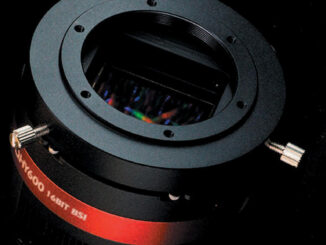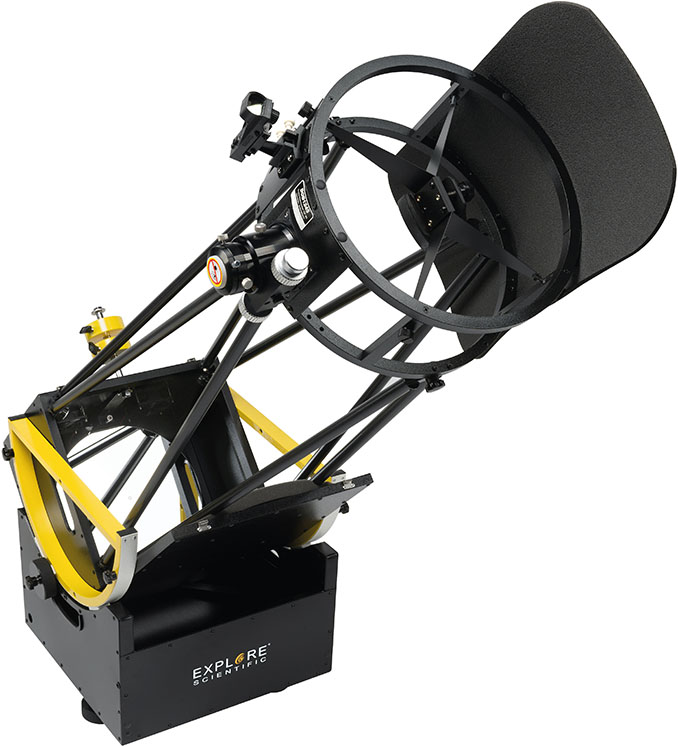
The elegant simplicity of Isaac Newton’s two-mirror reflecting telescope design from 1668 has inspired generations of amateur makers. However, not every observer possesses the practical skills (or inclination) to grind and polish their own mirrors, so a little background reading quickly informs you that it’s hard to beat the performance-to-cost ratio of a Newtonian when seeking the largest quality telescope for your money.
Yet even the best telescope is useless without an effective mount and, depending on its sophistication, a mounting can cost many times the cost of the instrument itself. It took nearly 300 years from Sir Isaac’s original proof of concept before John Lowry Dobson (1915–2014) created the minimalist fusion of Newtonian optics with a stable, easy-to-use mount, and hence the Dobsonian was born.
John Dobson lived in the United States from the age of 12, but he was born in Beijing, some 2,000 kilometres north of the city of Guangzhou, currently headquarters of Jinghua Optics and Electronics Co., Ltd. Better known in the West as simply JOC, it’s one of the largest optoelectronic manufacturers in China. JOC owns a number of familiar company names, including Bresser in Germany and Explore Scientific (ES) in the USA.
Explore Scientific currently sells a range of truss-tube Ultra Light Dobsonians encompassing four models of 254mm, 305mm, 406mm and 508mm aperture. The smaller models are both f/5, while the larger are f/4.6 and f/3.6, respectively. Each is modular in design, breaking down into compact, easy-to-assemble units for ease of transportation in even a small car to set up at dark-sky sites.
Unlike traditional Dobsonians, the ES Ultra Light range dispenses with plastic-coated, dense particle board construction in favour of powder-coated aluminium for strength, lightness and resistance to corrosion without the moisture-absorbing qualities of chipboard. Clearly, these are very important qualities in the UK’s maritime climate. For the purpose of this review we obtained (anonymously) a 305mm Explore Scientific Ultra Light Dobsonian for an extensive evaluation during the autumn of 2020.

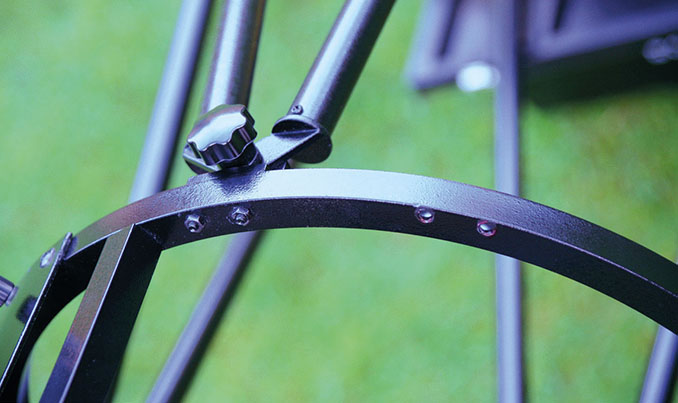

Delivery and first impressions
The ES 305mm f/5 Ultra Light arrives in a single 49 × 56 × 103 centimetre box that tips your bathroom scales at 34 kilograms, so you can be forgiven for thinking from the outset that ‘Ultra Light’ is something of a misnomer. Once all the packaging is removed you have these components: an 18.9 kilogram primary mirror box (38 × 38 × 29.5 centimetres) containing accessories, a 10 kilogram alt-azimuth rocker box (45 × 44 ×31 centimetres) temporarily hosting the secondary mirror cage, four pairs of 97-centimetrelong truss tubes, a primary mirror collimating tool, two 49-centimetre diameter D-shaped altitude wheels, a foam stray-light shield, a battery pack for the primary mirror cooling fans, a pair of one-kilogram counterweights and their shaft.
The primary mirror box is the heaviest single component of the telescope. This box has a hinged lid locked by two spring-loaded clips that provides ample protection for the primary mirror when stored, or while being carried via a single chrome hinged-handle on the side. The box has a shaped foam insert with a hardboard disc that is of the same diameter as the mirror underneath to provide protection with several layers of tissue paper sandwiched between to prevent contaminants from settling on the primary mirror (more on this later). Cut-outs in the foam hold the red-dot finder and hand-knob bolts used to attach the truss tubes when assembling the telescope.
When the tissue paper was removed, a perfectly coated, gleaming primary mirror with a laser-etched centre mark lay underneath. I was surprised that a separate mirror cover wasn’t provided; an inexpensive vacuum-formed plastic lid with mouldings at the edge to prevent contact with the mirror’s surface would suffice. If you intend reusing the tissue, you must be very careful to prevent contaminants getting sandwiched between it and the mirror.
Once any condensation on the mirror has dried after use, the temptation is to simply leave the foam insert out and close the hinged lid. However, the primary mirror box has open-aperture carrying handles on either side, and dust can easily make its way inside. I’m surprised that some enterprising third-party hasn’t produced covers for ES truss-tube Dobsonian primary and secondary mirrors, for the latter is also only provided with tissue paper for protection.
The pre-assembled alt-azimuth rocker box also provides storage for the fully assembled secondary mirror cage when not in use. This consists of an open-framework cylinder 38 centimetres in diameter and 17 centimetres high that houses the four-vane spider support and collimation mechanism, and the elliptical secondary mirror (7.5 centimetres along its minor axis), with a 50.8mm eyepiece fitting a helical rack-and-pinion focuser and 10:1 reduction gearing on the side of the cage.
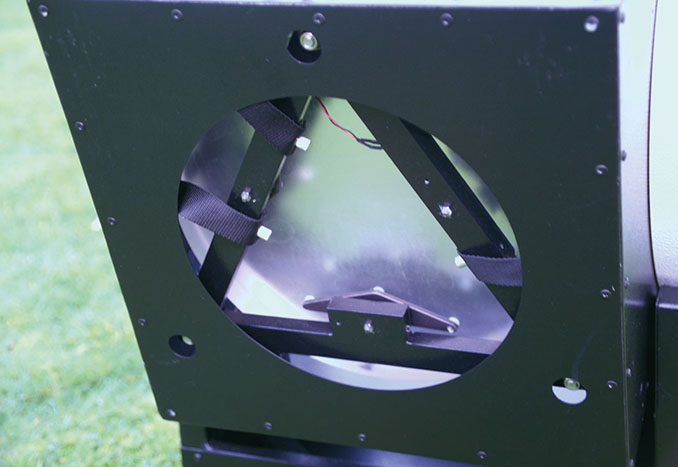
Assembly
The first act of assembling the telescope entails attaching the two yellow semi-circular altitude bearings to the sides of the primary mirror box. Two bolts with hand knobs secure each bearing, one going into a threaded hole on the side of the box, the other screwing into the side of the lid to keep it open. The lid also provides additional rigidity for the bearings. A third bolt attaches with the supplied Allen key into a recessed hole so as not to touch the 7.5-centimetre diameter rubber ‘hockey pucks’ on each side that act as as a crude but effective altitude friction brake.
There are two sets of holes on each side of the mirror box and its lid, the front holes reserved for those times when you intend to use heavier two-inch eyepieces – perhaps in conjunction with a coma corrector. I found that using the altitude bearings attached to the front holes altered the telescope’s centre of gravity enough to use a two-inch Antares 40mm Erfle eyepiece, plus all my 1.25-inch eyepieces, without needing to install the supplied counterweight shaft or either/both of its one kilogram masses.
The primary mirror box with attached altitude bearings just lowers into the pre-assembled rocker box. At this stage you need to remove the foam insert containing the finder and truss-tube bolts. The four corners of the upper mirror box possess threaded rods with hand knobs that accept cutouts on right-angled tabs at the hinged ends of each of the four truss pole assemblies. Here on in you are assembling the instrument with the primary mirror exposed, so make sure that you have a head torch to see what you are doing!
The secondary mirror cage attaches to the upper ends of the truss poles using four short bolts with hand knobs, a process that can be somewhat fiddly. I recommend that you do a trial assembly in the daytime first to get acquainted with the process, which, by night, will definitely require a head torch. Recall that the secondary mirror is solely protected by tissue paper. A clean plastic drink or washing-up bottle, with the end cut off and four equidistant slots cut into it for sliding over the four-vane spider support, would protect the secondary mirror from accidental damage and dust during set-up and subsequent disassembly.
The secondary mirror cage can be attached to the trusses in one of four orientations that position the focuser upwards, to the left or right side, or towards the ground. However, the secondary cage truss mounting lugs can be moved to an intermediate set of holes, affording a total of eight possible positions for your viewing comfort. With the experience of performing trial set-ups and disassemblies in daylight, it’s quite possible to have the 305mm ES Ultra Light ready for action in about 15 minutes. Here’s a great tip: colour code the truss poles with different shades of PVC electrical tape for repeatability, and by doing so you can frequently get away without needing to collimate the secondary mirror while the primary needs the merest tweak after reassembly.
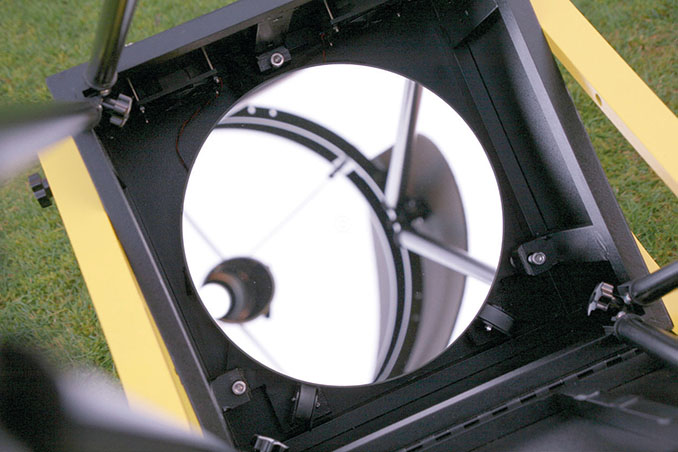
Collimation
There will be times, though, when you do need to collimate the telescope, which is essential for good optical performance in an f/5 focal ratio instrument. Fortunately, this is easy to do. The 75mm minor axis secondary mirror is cemented to a cell that cannot rotate about the telescope’s principal optical axis with respect to the focuser, plus the requisite offset of the secondary mirror to accommodate the steep light cone from the primary is preset at the factory. Three spring-loaded hand knobs are all you need to precisely line-up the primary’s reflection in the focuser, best done while using an optional Cheshire eyepiece or laser collimator. This means there are no fiddly Allen keys or screwdrivers to lose in the dark or drop onto the primary mirror.
The Ultra Light’s biggest innovation, though, is the ease with which you can collimate the primary mirror from the front of the telescope via the collimating tool. The latter is essentially an Allen key with a long shaft and a plastic ferrule that prevents you damaging the primary mirror’s coating should you accidentally touch it. You use the collimating tool on the three bolts around the mirror’s circumference to precisely adjust the tilt of the primary. It’s a bit nerve-racking manoeuvring a long metal rod close to the mirror, and once again a head torch is virtually mandatory. Aligning it this way means never having to perform an iterative collimation dance while kneeling in the wet grass, as you would with a conventional Dobsonian.
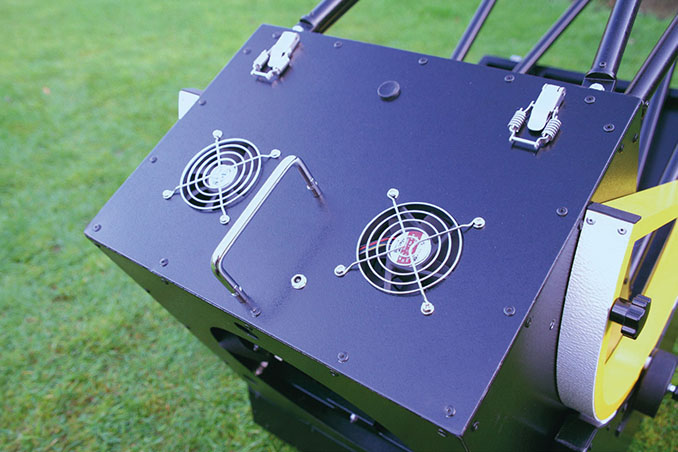
Fan-assisted optics
The review instrument is listed as a 305mm telescope, but owing to the chamfer on the primary mirror’s edge, the clear aperture was 300mm, fashioned from BK-7 glass nearly 40mm thick floating on a nine-point cell. The primary has no diffraction-inducing retaining clips either. The mirror’s lower edge rests on two plastic rollers and touches a felt pad at the upper edge. However, don’t worry that the mirror might pitch forwards when pointing towards the horizon: a pair of loose-fitting webbing straps siliconed to the mirror’s edge and attached by bolts to two of the triangular swingletrees (pivoted crossbars) supporting the primary prevent any gross movement.
The twin fans on the upper side of the mirror box are powered by the provided battery pack (8 × 1.5V D-cells not supplied) and operate as soon as the plug is connected. The reason for the fans is not to prevent dew settling on the mirror (although they will help), but to remove the boundary layer of air that sits above the surface of the cooling primary that is a common cause of poor localised seeing. One of the fans of the review instrument was installed the wrong way, so that instead of both blowing air across the mirror, one sucked while the other blew. It was a simple matter to reverse the ‘sucking’ fan by unscrewing four bolts in the corners and inverting it.

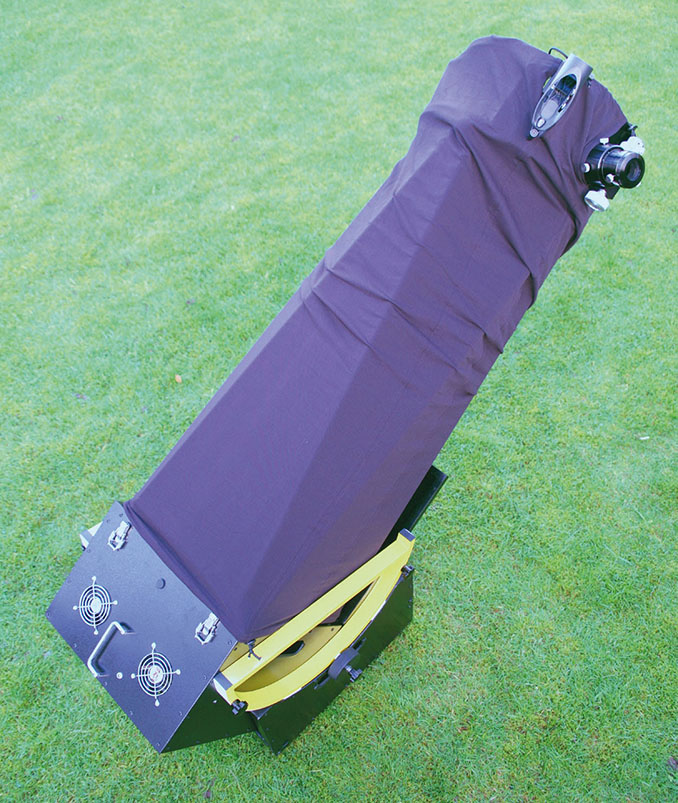
General impressions
As stated previously, the term ‘Ultra Light’ is perhaps something of a misnomer – maybe ‘Ultra Compact’ would be more appropriate, though with not quite the same ring to it.
Vibrations induced by a quick tap near the eyepiece died away in under two seconds with the base’s three 7.5-centimetre-diameter feet resting on compacted soil. The truss tubes are very rigid, and they only flex when one has to apply a sizeable force to turn the instrument solely in azimuth when looking near the Dobsonian ‘dead zone’ near the zenith – this is an issue for all Dobsonians, not just the Ultra Light. The review instrument otherwise retained alignment very well at all altitudes as confirmed by a laser.
The bearing surfaces are full thickness Teflon pads rubbing against textured aluminium, providing just the right amount of ‘stiction’ to both the altitude and azimuth axes. When the telescope is pointing at the zenith, the eyepiece is a convenient 140 centimetres above the ground, so you won’t require a step ladder. The open-framework tube means that tube currents are not a problem, but it does leave the mirrors open to stray light and at greater risk of dew.
To alleviate a potential dewing problem, Explore Scientific provides a shroud as an optional extra, made out of a stretchy black nylon material that is also thick enough to block unwanted stray light. While the shroud is somewhat fiddly to install, drawstrings permit you to gather in the material at strategic points around the truss tubes and secondary mirror cage. The material is certainly effective, thick enough not to tear with machine-stitched hems, and gives every impression of being durable.
The focuser is a hybrid Crayford with a rackand-pinion action over a five centimetre range with an engraved millimetre scale. It’s as smooth and responsive as a Crayford focuser, thanks to well-machined tolerances, and has a 1:10 reduction ratio on the fine-focus knob, but the helically-cut brass rack-and-pinion mechanism gives you greater lifting potential for heavy accessories with absolute freedom from slippage. All of my eyepieces came to focus thanks to a removable drawtube section.
Other than the few niggles that I have mentioned thus far, the generally well-conceived and well-executed design of the Explore Scientific 305mm, f/5 Ultra Light places it firmly in a desirable mid-range premium Dobsonian position. That said, I do have to vent my ire on the supplied red-dot finder that is anything but deluxe, despite its name. I wholeheartedly recommend that any prospective Ultra Light purchaser invests in a Celestron Star Pointer Pro that neatly and easily fits into the existing mounting bracket holes next to the focuser.
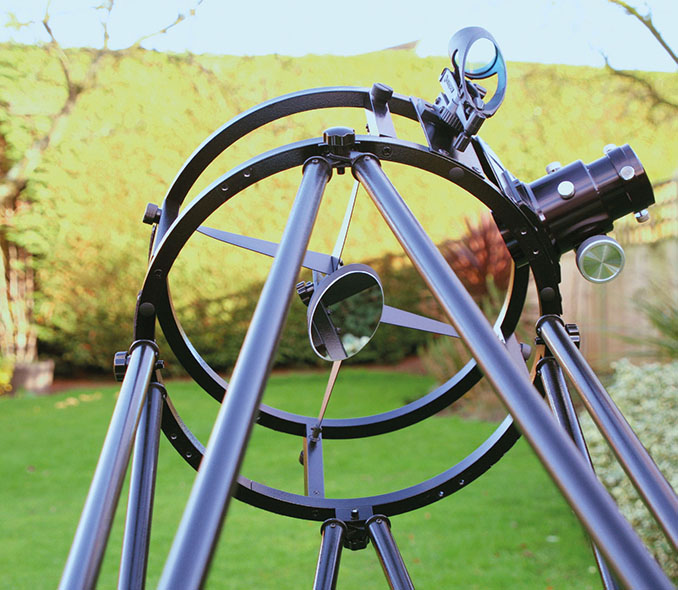
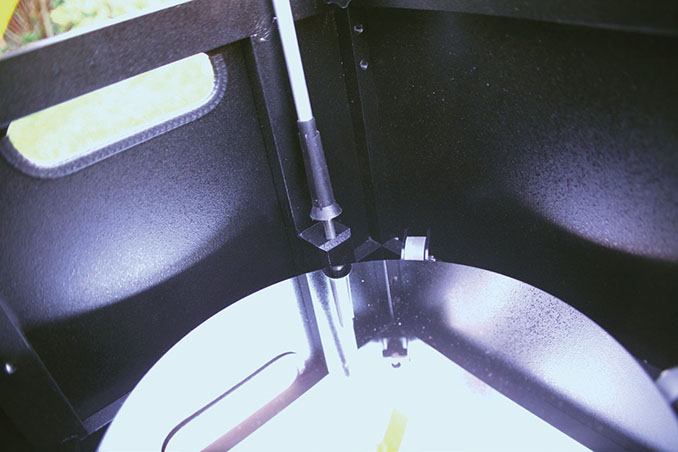
Optical quality
While most observers would pigeonhole a 305mm, f/5 Dobsonian as being primarily a deep-sky instrument, Explore Scientific does have a good reputation for well-figured mirrors from JOC, so I was keen to see how they would perform on planetary subjects too. Fortunately, this review coincided with the close opposition of Mars and a memorable observing session on the night of 9–10 October 2020, accompanied by my long-time observing colleague, Ian Nicol.
We set up overlooking Gunton Cliffs, near the most easterly point in England, hoping to benefit from improved seeing over the sea, and whiled away a couple of pleasant hours observing a wide range of deep-sky objects before the last quarter Moon rose in the north-east. At no time did we find the views disappointing or wanting for more in an instrument of this aperture.
Mars was three days past its closest approach to Earth, but opposition still lay four days ahead. Hence the red planet was a dazzling magnitude –2.4, and its fully illuminated disc was an impressive 22.5 arcseconds wide. By midnight, average seeing gave way to good, and we were able to routinely use magnifications of up to 300× on Mars.
Given the planet’s brilliance, the 0.6mm-thick four-vane secondary mirror support meant that it sat at the centre of a cruciform diffraction pattern, but the planet’s limb was sharp and a wealth of surface detail crystallised into view when seeing permitted. The Martian south polar cap was a tiny pure white oval with Mare Sirenum rotating off the disc. What surprised me, however, was the clarity and sharpness of the two-pronged Gomer Sinus looking like snake’s fangs emerging from the trailing end of Mare Cimmerium.
The views of Mars and delicate, high-contrast detail in the last quarter Moon, and the manner in which they snapped into focus, revealed all one needs to know about the fine figuring and polish of the review instrument’s mirrors. The fact that the product has a five-year warranty also says a lot about Explore Scientific’s confidence in the product and its durability.
At a glance
Optical design: Truss-tube Newtonian reflector
Mount type: Dobsonian altazimuth
Construction material: aluminium, black powder coated; ferrous spider vanes
Primary mirror diameter: 300mm (measured)
Secondary mirror minor axis: 74mm (measured)
Focal length: 1,525mm
Focal ratio: f/5 Resolution: 0.43 arcsecond
Focusing system: 50.8mm rack-and-pinion focuser with helical gearing and 10:1 reduction
Finderscope: red dot finder
Net weight (including accessories): 29.8kg
Warranty: five years
Price: £1,178
Supplier: telescopehouse.com


